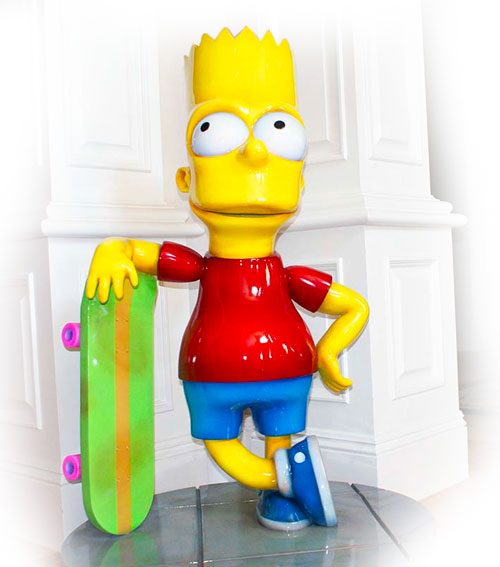Top 10 Cereal Mascots
WhiteClouds builds 3D Large Characters
In the vibrant realm of breakfast traditions, few characters shine as brightly as the top 10 cereal mascots. These animated heroes, each brimming with unique charisma and memorable escapades, have transformed mundane mornings into delightful adventures. From whimsical creatures chasing elusive treats to adventurous captains sailing crunchy seas, this list dives into the heart of breakfast lore, honoring the iconic mascots that have become synonymous with our first meal of the day.
#1: Tony the Tiger (Frosted Flakes, Kellogg’s – 1952)
In the world of breakfast cereals, few mascots are as iconic or universally recognized as Tony the Tiger. This gregarious, striped ambassador of Kellogg’s Frosted Flakes has roared his way into our mornings and our hearts since the 1950s. With his confident demeanor and timeless catchphrase, “They’re Gr-r-reat!”, Tony the Tiger represents more than just a cereal brand — he’s an embodiment of morning energy, enthusiasm, and positivity.
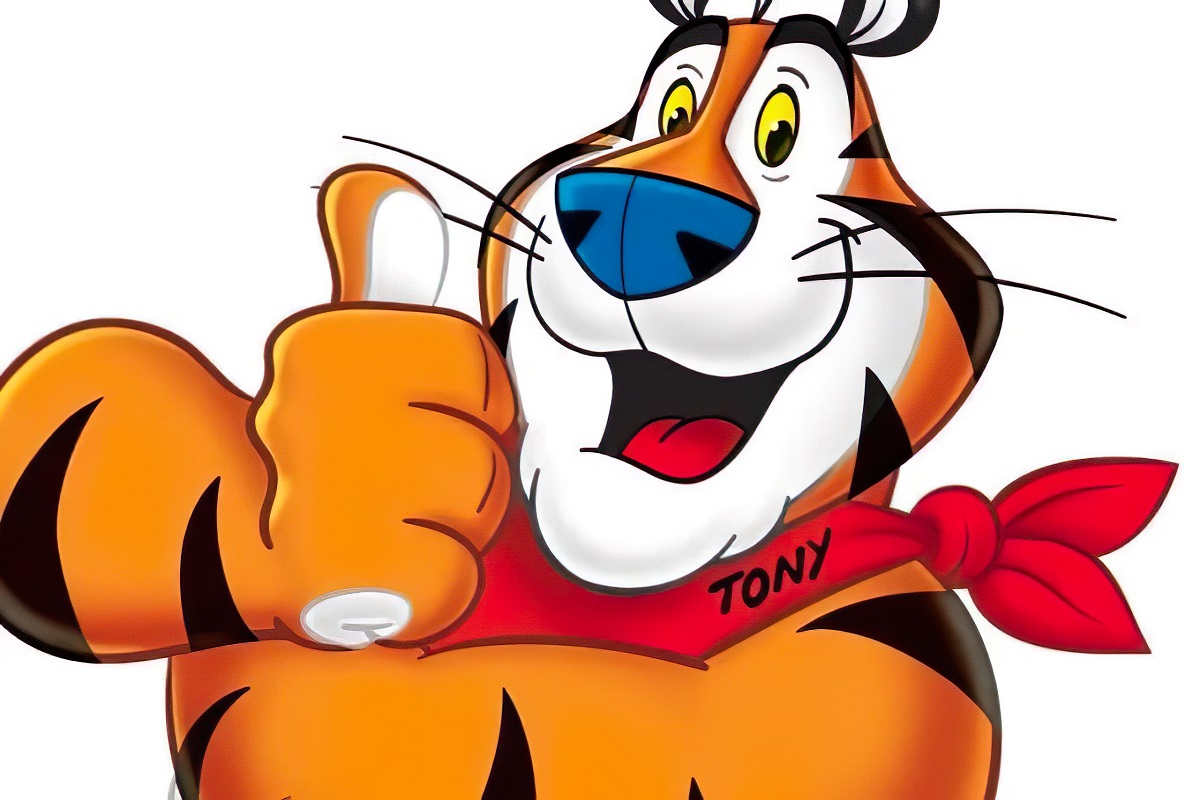
History and Origins: Tony the Tiger made his debut in 1952 as the face of Kellogg’s newly launched “Sugar Frosted Flakes”. The character was born out of a competition among several potential mascots, including Katy the Kangaroo, Newt the Gnu, and Elmo the Elephant. But it was the athletic, enthusiastic, and optimistic Tony that resonated most with audiences, quickly making him the cereal’s definitive mascot. His first appearance was markedly different from today’s Tony. Earlier versions depicted him as a four-fingered tiger sporting a teardrop-shaped head and a football-shaped body. Over the decades, Tony evolved: he grew more anthropomorphic, donned a red bandana (later swapped for a red scarf), and started standing upright, all the while maintaining his jolly, motivational personality.
The Voice Behind the Roar: Tony’s distinct voice was originally provided by Dallas McKennon, but the most well-known and enduring voice came from Thurl Ravenscroft, who voiced the character for over five decades, starting in 1953. Ravenscroft’s deep baritone bestowed Tony with a mix of authority and warmth, making him both a coach and a friendly companion to kids and adults alike.
Cultural Impact: Beyond the cereal box, Tony has become a cultural icon. He’s appeared in a variety of media campaigns, commercials, and even merchandise. The character’s popularity transcends age groups; while children are drawn to his animated energy and friendly demeanor, adults have a sense of nostalgia associated with him. Over the years, Tony’s image has been utilized to promote sportsmanship and active lifestyles, aligning with the nutritious, energy-packed breakfast that Frosted Flakes represents. From encouraging kids to be active to promoting school sports, Tony the Tiger has stood as a symbol of positive energy and encouragement. In 1974, Kellogg’s further emphasized Tony’s athletic image by introducing his Italian-American son, Tony Jr., who often accompanied him in various athletic adventures in commercials. Tony Jr. was created to appeal to younger children and emphasize the cereal’s energy-giving properties.
Legacy: Tony’s lasting appeal can be attributed to a blend of factors. His character design is vibrant and memorable, and his persona is positive, motivational, and always family-friendly. While other mascots have come and gone or undergone significant overhauls, Tony has remained relatively consistent, ensuring that he remains recognizable to each new generation. Moreover, the very simplicity of his message — the idea that starting your day with a good breakfast (like Frosted Flakes) can set a positive tone for everything that follows — is timeless. Whether you’re a child prepping for a school day or an adult gearing up for work, Tony’s signature encouragement is universally motivating.
Tony the Tiger-The Iconic Roar Behind Frosted Flakes: In a world that’s seen its fair share of changing breakfast trends, from cereal types to eating habits, Tony the Tiger remains an unwavering icon of morning meals. His legacy isn’t just about promoting a product but celebrating the potential of every new day. Through his infectious enthusiasm and iconic roar, Tony reminds us that with the right start, every day can be “Gr-r-reat!”
#2: Toucan Sam (Froot Loops, Kellogg’s – 1963)
Among the pantheon of breakfast cereal mascots, Toucan Sam stands out with his vibrant plumage and a nose that can seemingly find Froot Loops anywhere in the world. As the brand ambassador for Kellogg’s Froot Loops, this cheerful toucan has taken us on countless tropical adventures. “Follow your nose, it always knows!” — the famous catchphrase of Toucan Sam — is as ingrained in the memories of many as the sweet taste of the multicolored loops themselves.
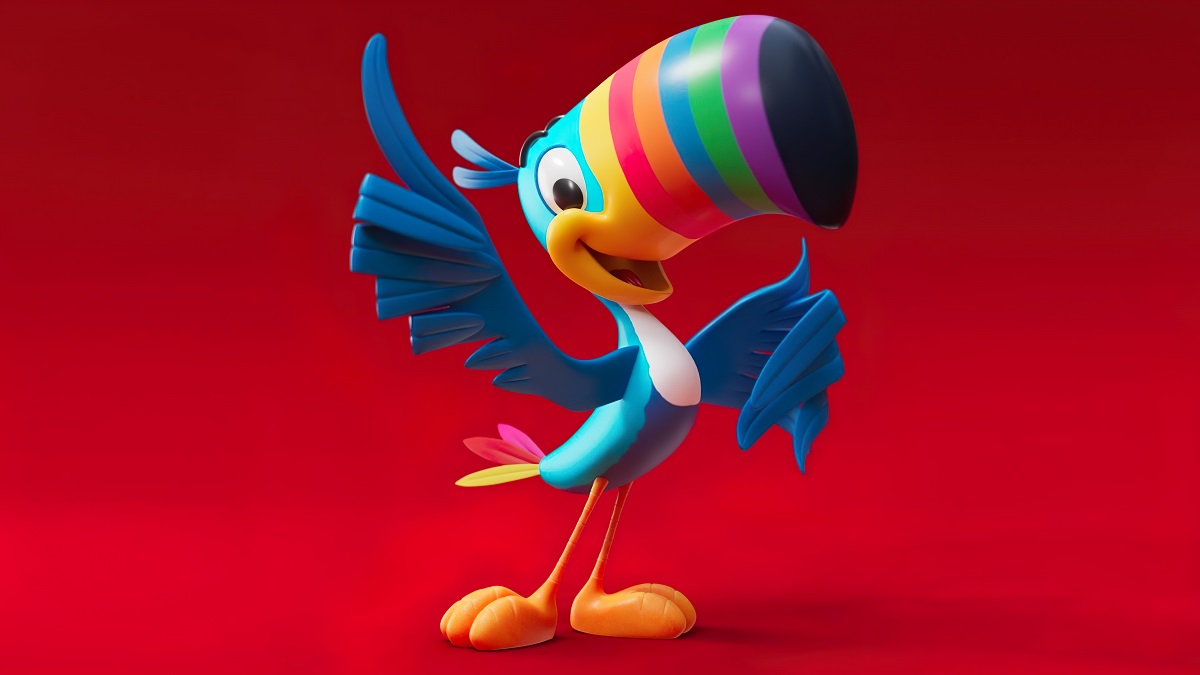
From Humble Beginnings to Iconic Status: Toucan Sam made his colorful debut in 1963, just one year after Froot Loops was introduced to the breakfast table. His British accent, a signature trait for many years, added a touch of worldly wisdom to his fun-loving nature. Over the years, his appearance underwent subtle changes. His nose, initially pink, transitioned to the multicolored version we recognize today, representing the different fruit flavors of the cereal.
The Voice of Adventure: Mel Blanc, best known for voicing many of the beloved Looney Tunes characters, lent his voice to the iconic toucan initially, imparting the character with a unique charm and warmth. Over the years, other voice actors have taken the baton, ensuring that Toucan Sam remains as lively as ever.
A Fruity Legacy in Popular Culture: Just as Tony the Tiger championed athleticism, Toucan Sam became synonymous with adventure. In numerous commercials, he’s portrayed guiding children through jungles, over waterfalls, and across rainbows in search of the delectable Froot Loops. These adventures, usually based on following his intuitive nose, not only made for engaging narratives but also subtly drove home the irresistibility of the fruity cereal. Kellogg’s also introduced us to Toucan Sam’s three nephews in the 1970s: Puey, Susey, and Louis. These characters brought new dynamics to the commercials, as they often accompanied their uncle on his many quests, adding an extra layer of excitement and camaraderie to the Froot Loops adventures.
Symbolism and Brand Consistency: Froot Loops, with its multitude of colors, flavors, and the tropical setting, found a perfect ambassador in a toucan — a bird renowned for its brightly-colored beak and native to the tropical regions of the Americas. This synergy between product and mascot ensures that the association is both natural and memorable. Over the years, the character of Toucan Sam has also been tweaked to stay relevant. From comic book appearances to video games and a host of merchandise ranging from toys to clothing, Toucan Sam has left his mark on pop culture.
Toucan Sam-Following the Fruity Path of Froot Loops: Toucan Sam, with his unforgettable nose and penchant for tropical escapades, has solidified his place in the cereal mascot hall of fame. He’s not just a character on a cereal box; he’s a symbol of exploration, joy, and the sheer delight of following one’s instincts. Much like the rainbow-hued loops he represents, Toucan Sam is a burst of color in the world of breakfasts, reminding everyone that adventure can be found in every bite.
#3: Snap, Crackle, and Pop (Rice Krispies, Kellogg’s – 1933)
In the realm of breakfast cereals, while many mascots promise adventure or athletic prowess, there’s a unique trio that has been delighting us with their eponymous sounds for generations. Snap, Crackle, and Pop, the beloved faces of Kellogg’s Rice Krispies, have become synonymous with the sensory experience of pouring milk over the crisp rice cereal. Their names, personifying the sound the cereal makes, have created an unforgettable audiovisual association for countless breakfast enthusiasts.
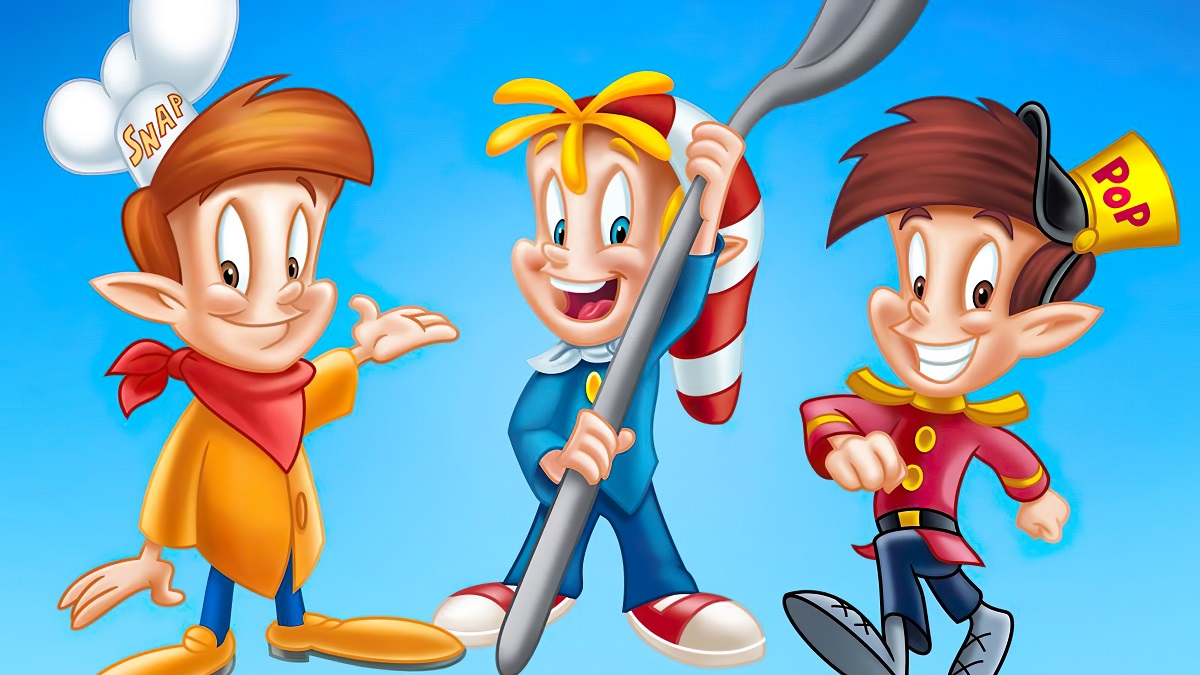
A Crispy Beginning: Snap, the eldest of the trio, first appeared on the scene in 1933. His success led to the introduction of his two brothers, Crackle and Pop, in subsequent advertisements. Together, they form the world’s tiniest and perhaps most melodious band. Their unique elfin designs have seen slight alterations over the decades, but their essence remains consistent: they’re cheerful, mischievous, and always in harmony.
The Soundtrack of Breakfast: The appeal of Snap, Crackle, and Pop goes beyond visual engagement. They represent an auditory experience, one that has made Rice Krispies distinct in the crowded cereal market. The playful sounds created when milk meets cereal offer a multisensory delight, making the consumption of Rice Krispies an experience rather than just a meal.
Iconic Voices and Engaging Narratives: While not as heavily characterized by individual voices like some other mascots, the trio’s collective voice, both literal and metaphorical, is unmistakable. Their adventures, often centered around the kitchen and the breakfast table, have seen them combating soggy cereal villains or crafting inventive devices to serve the perfect bowl. The 1950s were particularly significant for these characters as they began to gain more individual personalities. Snap took on the role of the problem solver, Crackle the unsure middle child, and Pop the mischievous and fun-loving youngest sibling.
Enduring Legacy and Cultural Impact: Snap, Crackle, and Pop’s popularity isn’t just limited to television commercials. They’ve graced comic strips, been immortalized as collectible figurines, and have even found their way into pop culture references in songs and films. Their longevity and endearing nature are testaments to their universal appeal. The trio also became champions of nutrition in the later years, emphasizing the wholesome goodness of Rice Krispies. This move not only positioned the cereal as a healthy breakfast choice but also showcased Snap, Crackle, and Pop as guardians of health.
Snap, Crackle, and Pop-The Symphonic Trio of Rice Krispies: Snap, Crackle, and Pop represent a timeless slice of advertising genius. They are more than just mascots — they encapsulate the entire Rice Krispies experience. Their symphonic names and playful antics have made them enduring icons in the world of breakfast cereals. In an industry that has seen mascots come and go, these three brothers have remained steadfast, reminding generations that breakfast can be both nutritious and fun.
#4: Cap’n Crunch (Cap’n Crunch, Quaker Oats – 1963)
In the vast sea of cereal mascots, there’s one captain whose command has never wavered over the decades. With his iconic naval uniform, twinkling eyes, and a mustachioed smile, Cap’n Horatio Magellan Crunch has been anchoring breakfast tables around the world. As the mascot for the eponymous Cap’n Crunch cereal, he’s come to symbolize mornings filled with sweetness, adventure, and a touch of maritime magic.
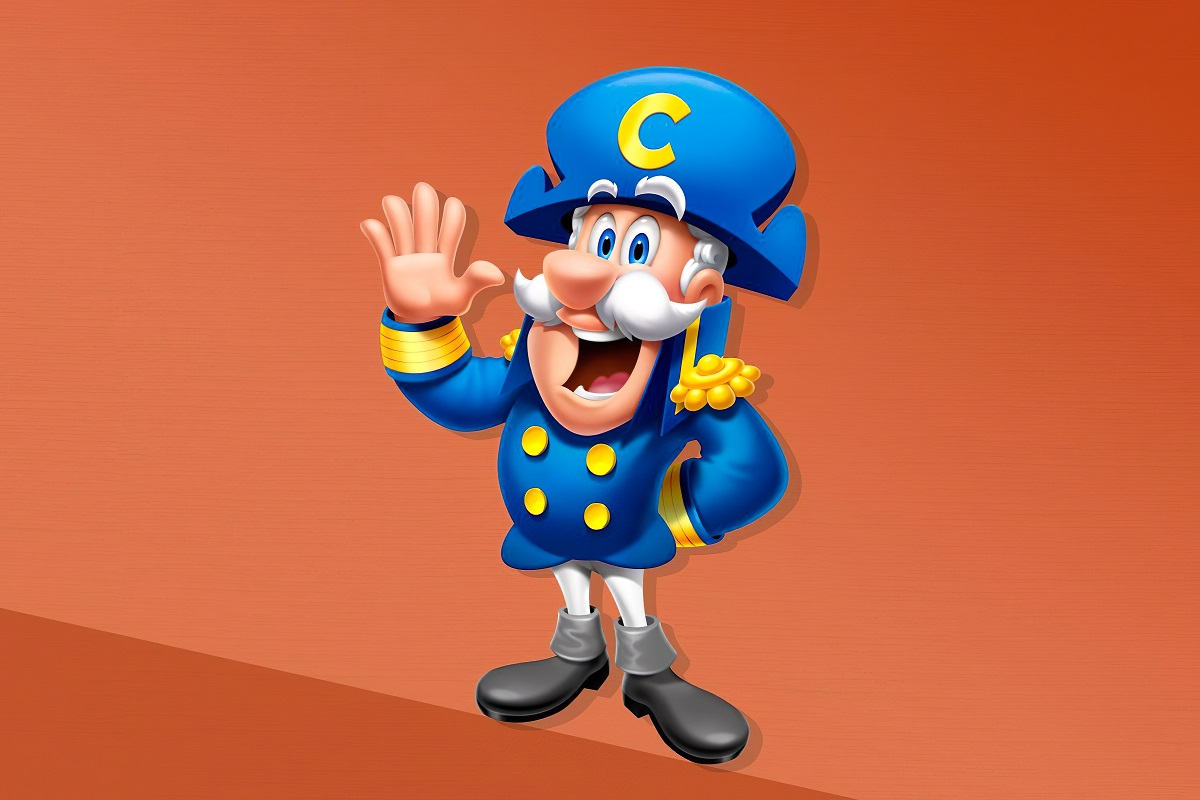
Setting Sail in the ’60s: Cap’n Crunch first embarked on his breakfast voyage in 1963, steering the ship for Quaker Oats’ then-new cereal. The brainchild of advertising guru Jay Ward, the same creative force behind animated hits like “Rocky and Bullwinkle,” Cap’n Crunch was never just a face on a cereal box. He was a character, imbued with a backstory, a personality, and a penchant for naval adventures.
Voice of the Captain: The charm of Cap’n Crunch was amplified by the distinctive voice of Daws Butler, known for voicing several classic Hanna-Barbera characters. Butler’s characterization endowed the Captain with warmth, joviality, and a slightly mischievous streak, making him both an authority figure and a playful companion to kids.
The Cap’n’s Many Adventures: The world of Cap’n Crunch extends far beyond his ship and cereal. Through a series of commercials, kids were introduced to Crunch Island, a fantastical place where the Mountains meet the Sea, and where the magical cereal crop grows . The Cap’n’s adventures often centered around safeguarding his secret cereal recipe from adversaries like Jean LaFoote, the barefoot pirate. Besides the original cereal, the Cap’n has expanded his fleet to include a variety of flavors and spin-offs, each with its own theme and narrative, such as Crunch Berries and Peanut Butter Crunch.
Controversy and Crunchatude: The Cap’n hasn’t sailed entirely without controversy. An enduring urban legend claims he’s not a real captain based on the number of stripes on his uniform. Whether true or just a fun piece of trivia, this piece of lore has only added to the Cap’n’s mystique and popularity. Over the years, the brand introduced the concept of “Crunchatude” – a blend of the words “Crunch” and “attitude.” It embodied the spirit of fun, resilience, and a touch of rebellion, further cementing the Cap’n as a beloved rebel of the high cereal seas.
Cap’n Crunch-Navigating the Seas of Breakfast Bowls: Cap’n Crunch isn’t just a mascot; he’s a testament to the power of storytelling in branding. Through his adventures, challenges, and unyielding spirit, he has brought to life a cereal that’s as much about taste as it is about imagination. His enduring presence reminds us that with the right blend of sweetness, courage, and a dash of ‘Crunchatude,’ every morning can be an adventure.
#5: Trix Rabbit (Trix, General Mills – 1959)
For many, the phrase “Silly rabbit, Trix are for kids!” evokes fond memories of Saturday mornings, cartoon commercials, and colorful bowls of fruity cereal. As the mascot of the vibrant Trix cereal, the Trix Rabbit has come to embody the never-ending pursuit of a delicious treat. His relentless efforts to enjoy a bowl of Trix, always thwarted at the last moment, have made him a lovable and somewhat tragic figure in the annals of cereal lore.
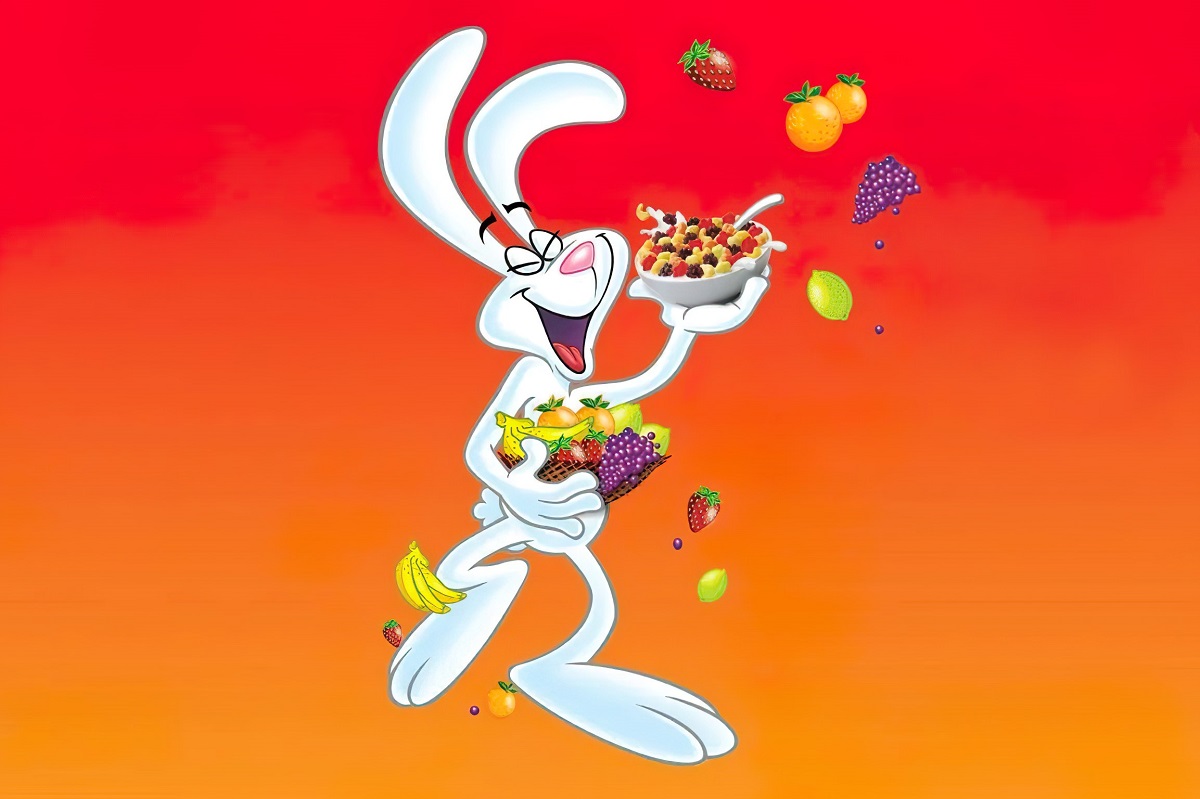
A Hop into Fame: The Trix Rabbit bounded onto the scene in 1959, a creation intended to reflect the fun and vivacity of the fruity cereal he so dearly loves. His bright eyes and cheerful demeanor made him instantly relatable, while his singular mission to taste Trix cereal added an element of suspense and empathy to his story.
Voice of the Hopeful Hare: The Trix Rabbit has been voiced by several actors over the years, each lending their unique touch to his character. Yet, through all these shifts, the Rabbit’s infectious enthusiasm and childlike innocence have remained constant, making him both lovable and ever-relatable.
Decades of (Almost) Success: Throughout the years, the narrative has been simple yet incredibly effective: the Trix Rabbit devises a plan to finally enjoy a bowl of Trix cereal, only to be thwarted usually by children who remind him, “Trix are for kids!” These tales of near-success have been a core aspect of the brand’s identity, with the Rabbit donning various disguises and trying countless tactics, all in the name of Trix. In a twist, in the 1970s and again in 1980, the brand allowed children to vote on whether the Rabbit should finally get his Trix. While he tasted momentary victory, the narrative status quo was eventually restored, ensuring the continuation of his playful pursuits.
Symbolism and Impact: The Trix Rabbit embodies a universal theme: the ever-elusive pursuit of our desires. His repeated failures, rather than being disheartening, are portrayed humorously and with optimism, teaching young viewers about resilience, determination, and the importance of trying, no matter the odds. His iconic status was cemented not only through commercials but also through various merchandise, appearances in other media, and even video games. The Rabbit’s constant chase for Trix parallels the eagerness and excitement children (and many adults) feel towards life’s simple pleasures.
Trix Rabbit-The Eternally Hopeful Mascot of Trix Cereal: The Trix Rabbit is more than just a cereal mascot. He is a symbol of hope, perseverance, and the childlike joy that can be found in the pursuit itself, even if the goal remains just out of reach. His journey, filled with both humor and heart, reminds us of the lengths one might go to for something they love and the fun that can be found in the chase. As long as there are bowls of Trix cereal and children to enjoy them, the Trix Rabbit will undoubtedly be nearby, plotting his next delightful attempt.
#6: Lucky the Leprechaun (Lucky Charms, General Mills – 1963)
In the magical world of breakfast cereals, Lucky the Leprechaun shines as the enchanting face of Lucky Charms, guiding kids through a world where rainbows lead to pots of gold and horseshoes are more than just metal. With his sprightly green attire, signature red hair, and an ever-twinkling eye, Lucky captures the whimsy and wonder of the very cereal he represents. His misadventures, always centered around guarding his cherished cereal from eager children, make him one of the most recognized and beloved mascots in cereal history.
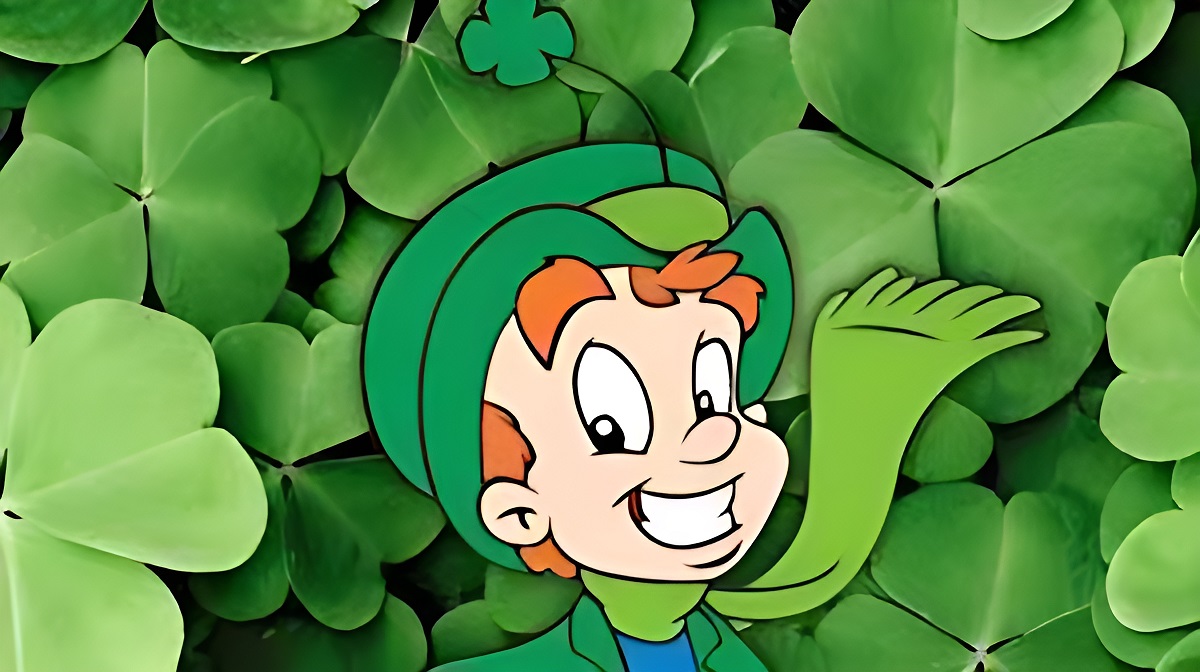
A Charm-ing Introduction: Making his debut in 1964, Lucky the Leprechaun, also known as “Sir Charms” in the early commercials, was brought to life to embody the magical allure of Lucky Charms, a cereal filled with colorful marshmallow shapes or “marbits” and frosted oats. Over time, Lucky’s world expanded to include new magical charms, each with its special power, and his persona evolved to be the crafty yet lovable guardian of these magical treasures.
Lending Voice to the Magic: Lucky’s delightful Irish brogue, a testament to his leprechaun heritage, has been voiced by several talented actors over the decades. The accent and enthusiastic pitch have made him sound both wise and playful, capturing the imaginations of kids and adults alike.
A Dance of Pursuit and Escape: The central narrative of Lucky Charms commercials often revolves around children trying to get their hands on Lucky’s cherished cereal, drawn by its magical allure. Lucky, in turn, uses the unique powers of the charms to make daring escapes. From turning invisible with the help of blue diamonds to speeding away on shooting stars, Lucky’s adventures are a thrilling chase, always emphasizing the “magically delicious” nature of the cereal. However, there are moments of shared joy too. On rare occasions, Lucky willingly shares his treasured cereal with children, emphasizing the message of sharing and the simple joy it brings.
Symbolism and Cultural Impact: Lucky embodies the sense of wonder and belief in magic that many children naturally possess. The idea that everyday objects, like the shapes found in a cereal bowl, can have magical properties is a captivating thought, and Lucky Charms taps into this fantasy perfectly. Beyond commercials, Lucky has graced various merchandise, from T-shirts to toys, and has even made appearances in video games and other media. His iconic status has made him a staple of pop culture references, especially around St. Patrick’s Day.
Lucky the Leprechaun-The Magical Guardian of Lucky Charms: Lucky the Leprechaun is more than just a mascot; he’s the gatekeeper of a world where magic is real, and the impossible is just a charm away. His escapades, filled with enchantment and wonder, serve as a reminder of the magic of childhood, where belief is strong, and every bowl of cereal can be a portal to adventure. As long as there’s a rainbow in the sky and a twinkle in a child’s eye, Lucky’s tales of magic and mischief will continue to captivate hearts and appetites.
#7: Count Chocula (Count Chocula, General Mills – 1971)
Breakfast cereals have a history of presenting colorful, cheerful mascots to lure children into a morning routine. Yet, among these sprightly figures, there stands one that draws inspiration from the shadows: Count Chocula. With his vampire aesthetic, Transylvanian accent, and undeniable charisma, Count Chocula has transformed the breakfast table into a delightful dance of darkness and chocolatey goodness.
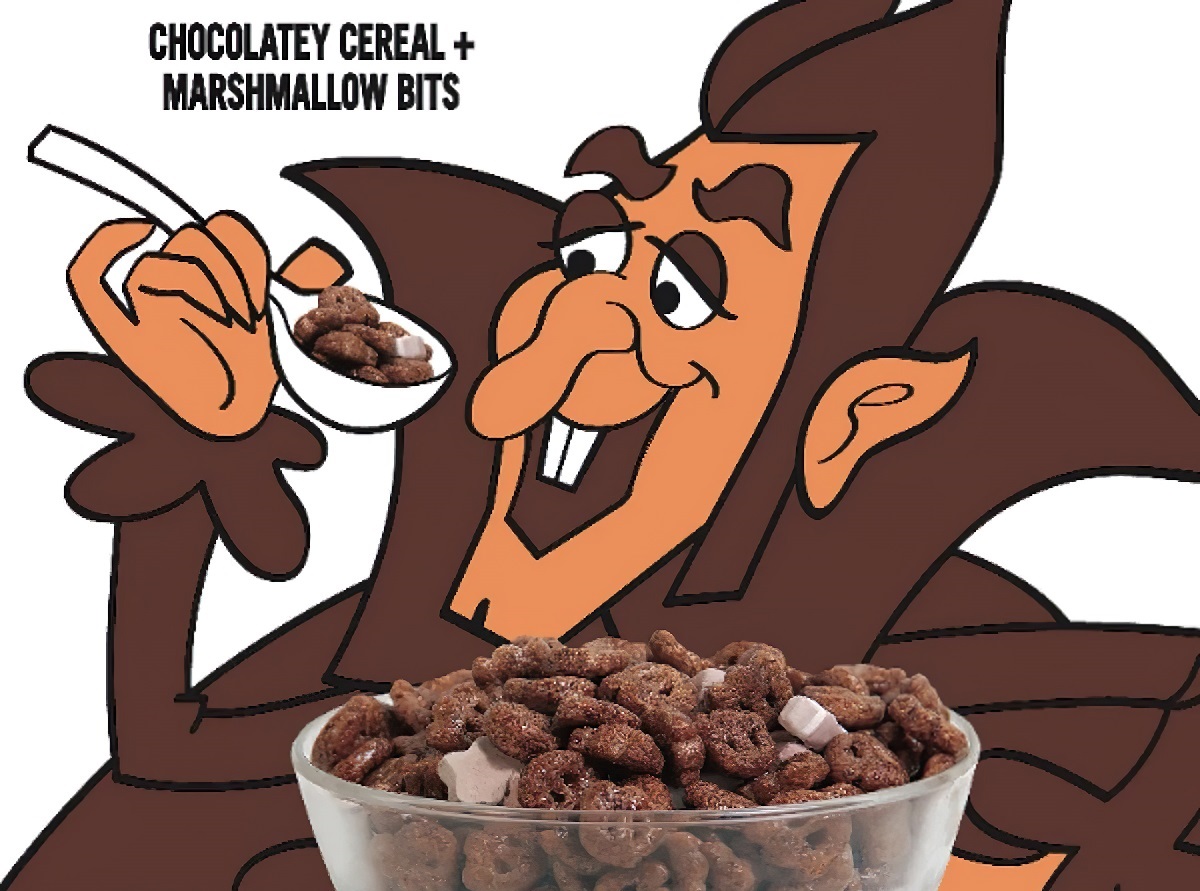
The Midnight Breakfast Begins: Count Chocula first emerged from his cereal coffin in 1971, introducing kids to a world where monsters and marshmallows coexisted. Created as part of General Mills’ monster-themed cereal lineup, Count Chocula was soon joined by Franken Berry, Boo Berry, and others. While each monster brought its unique flavor, Count Chocula’s chocolatey charm quickly became a favorite.
A Voice that Bites: Though he’s a vampire, Count Chocula’s voice has always been more inviting than intimidating. His signature accent, reminiscent of classic horror icons like Bela Lugosi’s Dracula, brought a layer of authenticity to the character, making him both endearing and playfully eerie. This blend of the familiar and the fantastic is a testament to the voice actors behind the character, who made sure the Count was more sweet than sinister.
Chasing Chocolaty Delight: Unlike most cereal mascots who usually evade children in pursuit of their cereal, Count Chocula’s narrative often centers around his quest to find or promote his beloved chocolate cereal, emphasizing its irresistible taste. Over the years, his adventures have seen him interact with other monsters, face humorous situations, and even confront cereal shortages, all the while ensuring his chocolatey cereal remains a breakfast favorite.
Cultural Impact and Legacy: Count Chocula, with his memorable look and persona, has etched his mark not just on cereal boxes but also on pop culture. He’s often referenced around Halloween, celebrating the fusion of spooky and sweet that he embodies. From his appearances in TV shows to being parodied in various media, the Count’s presence goes far beyond the breakfast aisle. His cultural significance is further solidified by the seasonal availability of Count Chocula cereal in recent years. The decision to make it a Halloween special has turned the cereal into a much-anticipated treat, with fans eagerly awaiting the Count’s annual return.
Count Chocula-The Deliciously Dark Side of Breakfast: Count Chocula is a brilliant blend of playful spookiness and delightful taste. He reminds us that the world of monsters needn’t always be scary; it can be sweet, fun, and filled with chocolate marshmallows. His lasting appeal is a confirmation to the power of a unique character, one who can merge the worlds of horror and humor, darkness and dawn. As long as there’s a thrill in the night and a craving for chocolate, Count Chocula will continue to reign over our breakfast bowls, one bite at a time.
#8: Sugar Bear (Golden Crisp, Post Consumer Brands – 1963)
Swinging into the breakfast scene with a laid-back demeanor and an insatiable love for Golden Crisp, Sugar Bear is a stark departure from the frenzied energy of many cereal mascots. His smooth voice, signature swagger, and unflappable cool have made him a breakfast icon, representing a cereal as golden and alluring as his personality.
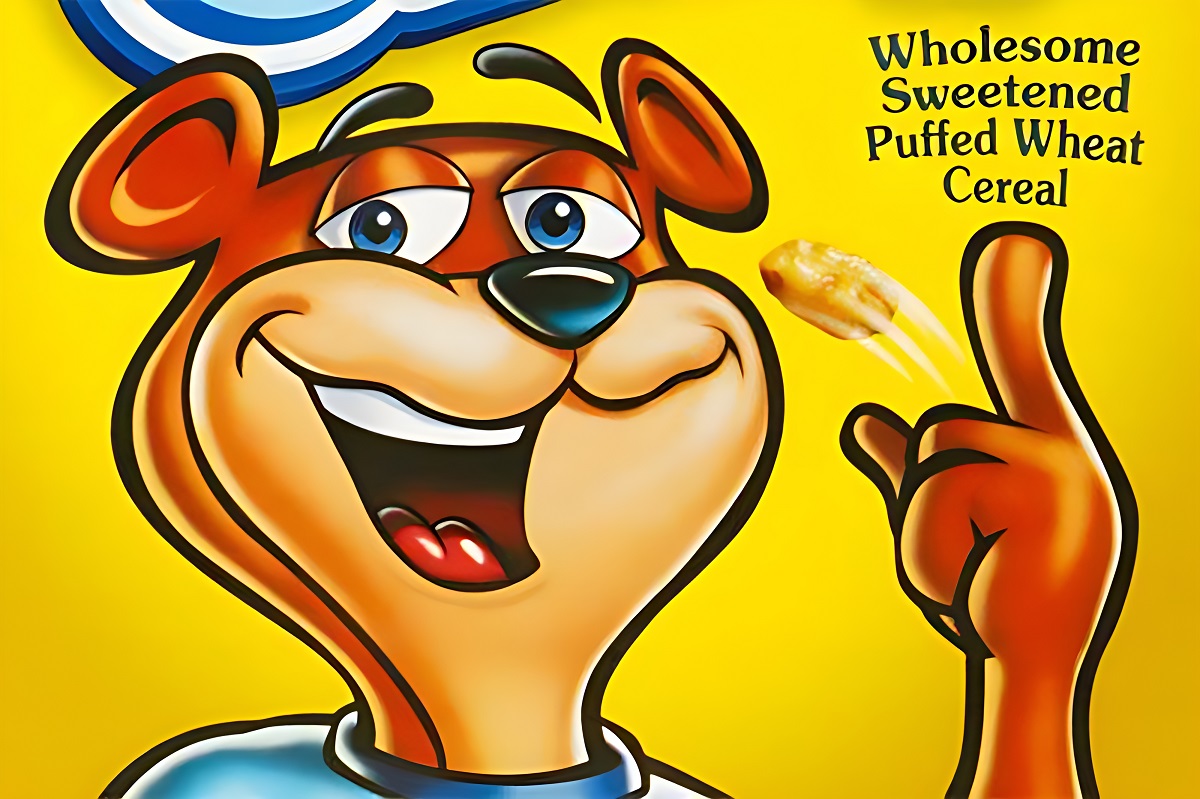
A Mellow Start in the ’60s: Sugar Bear first sauntered onto television screens in 1964 as the face of Super Sugar Crisp, later renamed Golden Crisp. Unlike mascots that relied on antics and loud catchphrases, Sugar Bear was a smooth operator, using his charm and gentle wit to navigate obstacles and express his love for the cereal. His approach was suave, yet there was always a hint of mischief in his eyes.
The Voice of Smooth: Over the years, Sugar Bear’s voice, characterized by a deep, soothing tone, became one of his defining features. Drawing inspiration from popular crooners and jazz singers, his voice gave him a unique place in the cereal mascot universe, making him stand out from the more boisterous crowd. This vocal charm perfectly echoed the cereal’s honey-coated appeal.
Adventures in Golden Valley: While his primary objective has always been to enjoy a bowl of Golden Crisp, Sugar Bear’s journey has seen its share of adversaries. From Granny Goodwitch, who started as a foe but later became a friend, to other critters trying to snatch away his beloved cereal, Sugar Bear always manages to outwit them, often with a serenade or a simple trick. No matter the challenge, his motto remains the same: “Can’t get enough of that Golden Crisp.”
A Legacy of Cool: Sugar Bear’s relaxed attitude and charismatic persona have made him a memorable figure in pop culture. His jingles and commercials are reminiscent of simpler times when Saturday mornings were about cartoons, cereal, and calm moments before the day’s adventures. The character’s legacy has transcended the cereal box, with appearances in other media and even a few playful parodies, underscoring his status as a beloved breakfast figure.
Sugar Bear-The Smooth-Talking Guardian of Golden Crisp: In a world filled with hyperactive heroes and frenzied chases, Sugar Bear’s enduring appeal lies in his cool confidence and unshakable love for Golden Crisp. He is a reminder that sometimes, the most memorable moments come not from chaos, but from calm. As long as there’s a morning sun casting golden rays and a craving for a honey-infused breakfast, Sugar Bear will continue to serenade his way into our hearts and breakfast bowls.
#9: Franken Berry (Franken Berry, General Mills – 1971)
Amidst the sugar-filled sea of cereal mascots, Franken Berry rises—a pink, affable creature, patchworked together not from spare body parts, but from the delightful essence of strawberries. As one of the iconic monster cereals from General Mills, Franken Berry presents a playful twist on Mary Shelley’s classic monster, introducing children to a world where the “scary” can be sweet and where breakfast becomes a monstrous delight.
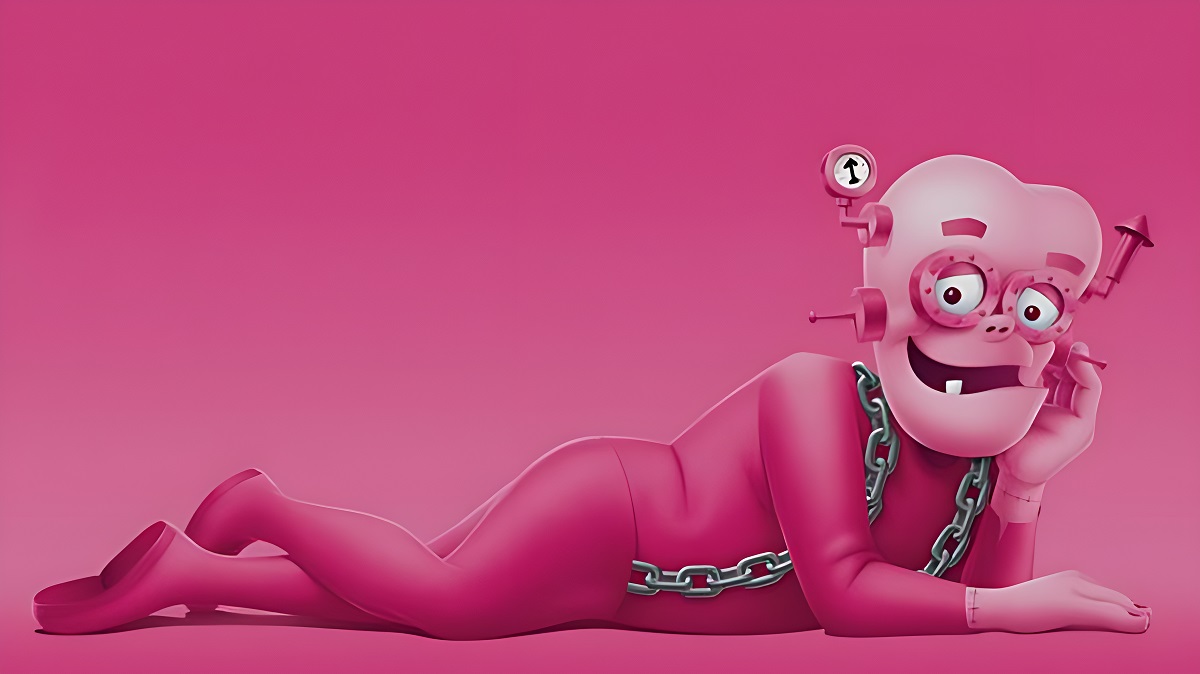
Berry Beginnings in the ’70s: In 1971, cereal bowls were set to be haunted by a new duo: Count Chocula and Franken Berry. While the Count swooped in with his chocolate charm, Franken Berry offered a fruity counter with his strawberry-flavored cereal. Stitched together with fun and flavor, this friendly giant quickly established himself as a favorite among children, transforming mornings into berry-laden feasts.
Voice of the Gentle Giant: Franken Berry’s voice, characterized by its soft, jovial tone, added to his endearing persona. In stark contrast to the deep, ominous tones often associated with Frankenstein’s monster, Franken Berry’s voice showcased a character filled with enthusiasm and innocence, further endearing him to young audiences.
Tales of Berry and Boo: Franken Berry’s adventures often revolve around his friendly rivalry with Count Chocula and, later, with other monster cereal mascots like Boo Berry and Fruit Brute. Whether they’re vying for the title of the best cereal or finding themselves in light-hearted mischief, Franken Berry’s antics highlight his lovable nature and insatiable love for his strawberry cereal. An interesting piece of Franken Berry lore was the infamous “Franken Berry Stool” incident in the ’70s. The original pink dye used in the cereal didn’t break down in the body, leading to a harmless but startling pink tint in children’s stool, causing concerns among parents. This led General Mills to change the dye to avoid further confusion.
Impact and Cultural Reverence: Franken Berry’s fusion of horror motifs with childlike sweetness became a significant hit, turning the monster cereals into cultural icons. Franken Berry, with his unique look and charm, became a sought-after character during Halloween, often returning seasonally to give breakfasts a festive twist. Beyond the cereal box, Franken Berry has been celebrated in various collectibles, art pieces, and pop culture references, underscoring his legendary status in the cereal mascot pantheon.
Franken Berry-The Berry-Filled Behemoth of Breakfast: Franken Berry, with his patchwork design and berry-filled heart, stands as a testament to the power of imaginative branding. He embodies the idea that monsters aren’t always to be feared; sometimes, they can be the bearers of joy, sweetness, and strawberry-flavored memories. As long as there’s a fondness for monster tales and a craving for fruity cereals, Franken Berry will continue to be a beloved breakfast behemoth, bringing smiles and sweetness to the table.
#10: Boo Berry (Boo Berry, General Mills – 1973)
Hovering between the aisles of countless cereal brands is a phantasmal figure with a penchant for blueberries: Boo Berry. As the first blueberry-flavored cereal character, Boo Berry brings a spectral sweetness to the breakfast table, marrying the thrill of ghostly tales with the allure of fruity flavors. This ghost, far from being spooky, invites kids into a world where every bowl is a hauntingly delicious experience.
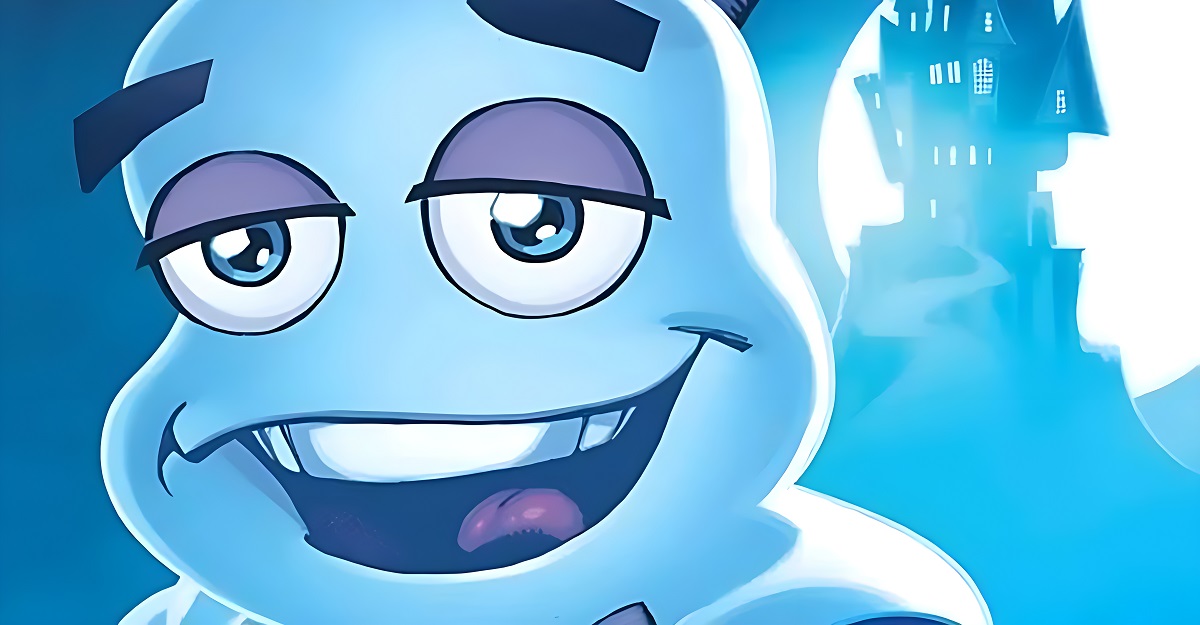
A Spectral Debut in the ’70s: Joining the monster cereals lineup of General Mills in 1973, after the introductions of Count Chocula and Franken Berry, Boo Berry brought a fresh, blue twist to the table. With his fedora and the constant daze in his eyes, he was neither the menacing spirit of folklore nor the fearsome phantom of ghost stories. Instead, he was a friendly apparition with a sole mission: to share the joy of his blueberry-flavored cereal.
Ethereal Voice of the Afterlife: Boo Berry’s voice, echoing with a gentle raspiness, further amplified his spectral persona. This ethereal tone, reminiscent of ghosts from classic films and stories, imbued the character with an air of mystery while retaining a childlike innocence that made him approachable and delightful.
Epic Tales of Monstrous Mornings: Boo Berry’s narratives often intertwine with those of his monster cereal compatriots, Count Chocula and Franken Berry. The trio’s playful rivalries, as they each championed their respective cereals, became staple scenarios in commercials and promotions. Boo Berry, with his calm and often aloof demeanor, always added a whimsical contrast to the spirited dynamics of the group.
From Cereal Bowls to Cult Status: The charm of Boo Berry transcended beyond breakfasts. As with the other monster cereals, Boo Berry’s limited availability, especially in recent times, turned the cereal into a coveted seasonal treat. This exclusivity, paired with a nostalgic love for the character, has transformed Boo Berry into a cult favorite, celebrated in art, collectibles, and pop culture references.
Boo Berry-The Ghostly Gourmet of Breakfast Bowls: Boo Berry reminds us that stories of the supernatural need not always send chills down the spine; sometimes, they can warm the heart and satisfy the palate. With his ghostly grace and blueberry bliss, Boo Berry serves as a delightful bridge between the worlds of the living and the legends, ensuring that every morning can have a touch of magic and mystery. As long as tales of phantoms fill the night and cravings for blueberry delights linger, Boo Berry will continue to haunt our breakfast rituals, one delicious spoonful at a time.
As we wrap up our exploration of the top 10 cereal mascots, it becomes evident that these vibrant characters have offered more than just playful pitches for our favorite breakfasts; they’ve woven stories, emotions, and a touch of enchantment into our morning routines. Their enduring charm ensures they remain not just on our cereal boxes, but also as cherished memories in our hearts. Every breakfast serves as a reminder of these iconic figures and the delightful moments they’ve ushered in, one spoonful at a time.
Cereal Mascots to Physical 3D Forms
In the ever-evolving landscape of brand marketing and consumer engagement, companies continually seek innovative ways to bring their brands closer to their audience. One such groundbreaking approach has been the transformation of beloved cereal mascots from mere 2D box illustrations to tangible 3D forms. By leveraging advancements in 3D printing, augmented reality, and even toy manufacturing, brands have succeeded in creating a more immersive and interactive breakfast experience.
Imagine your morning routine interrupted by a life-sized, 3D version of Tony the Tiger proclaiming that breakfast is indeed “Grrrreat!” or a miniature version of Lucky the Leprechaun hiding real ‘gold’ (or cereal) at the end of a rainbow in your living room. The shift from flat images to dynamic 3D figures not only enhances brand recall but also establishes a deeper emotional connection between the consumer and the brand. These tangible avatars serve as a daily reminder of the fun, fantasy, and nostalgia associated with our favorite cereals, making each bowl consumed an adventure unto itself.
Learn more about 3D Characters
See our all-inclusive 268 Cereal Mascots. Learn more about our Mascots at Cereal Mascots or 3D Mascots.
Contact us today to learn more about our services and how we can help you achieve your goals.
